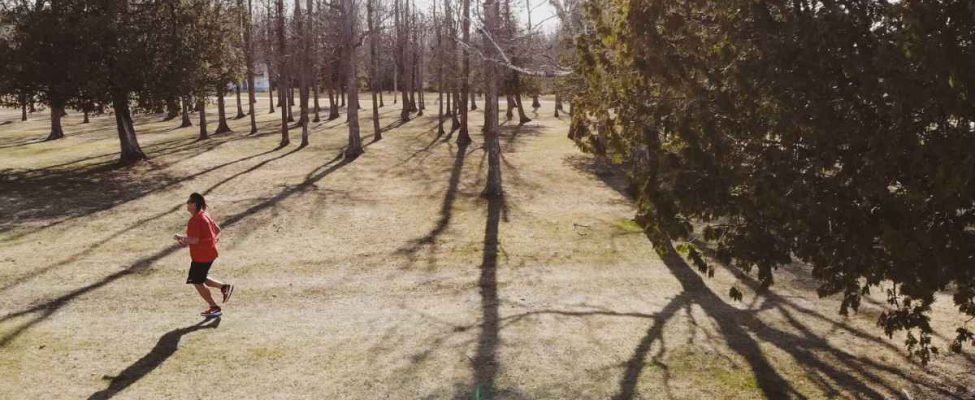The red dress has become a powerful symbol in raising awareness about Missing and Murdered Indigenous Women, Girls, & Two Spirit (MMIWG2S+) in North America. The red dress symbolizes the thousands of Indigenous women who have disappeared or been murdered, often with little to no investigation or media coverage.
The significance of the red dress lies in its ability to draw attention to the crisis facing Indigenous communities, where women and girls are disproportionately affected by violence. The red dress serves as a reminder of the lives lost, the families left behind, and the urgent need for action to address systemic issues such as poverty, racism, and inadequate access to justice and resources.
Through art installations, social media campaigns, and public demonstrations, the red dress has become a powerful tool for Indigenous activists and allies to demand justice, accountability, and meaningful change. It symbolizes resilience, solidarity, and the ongoing fight for Indigenous rights and sovereignty.
The plight of MMIWG2S+ demands our attention, our action, and our empathy. Join us as we embark on a journey with Jerome Tuesday, a Fort Frances, Ontario local who runs in the hope of raising awareness for Missing and Murdered Indigenous Women (MMIW), delving into the complexities of his mission, the scars of historical trauma that fuel his resolve, and the flickering flame of hope that guides his path forward.
Trailblazer for change
Interview conducted by Jana-Rae Yerxa, Anishinaabe Gikendaasowin Professor and Curriculum Developer at Seven Generations Education Institute.
Jana-Rae Yerxa: Miigwech for agreeing to see me today, Jerome. I have been looking forward to talking with you and learning more about your running. Since I moved home, you have caught my eye with the red shirts – even MMIW on them. When did you start running and why?
Jerome Tuesday: I started running in 2008. A long time ago. My mileage is up there. Back then, it was mainly for health reasons. I was unhappy with my image back in the day. I wanted to get better health-wise and commit to something. One of my old friends inspired me to run. I was just in a weird spot back in the day because I dropped out of school and didn’t have a job or anything, and you must have hobbies in this town, right?
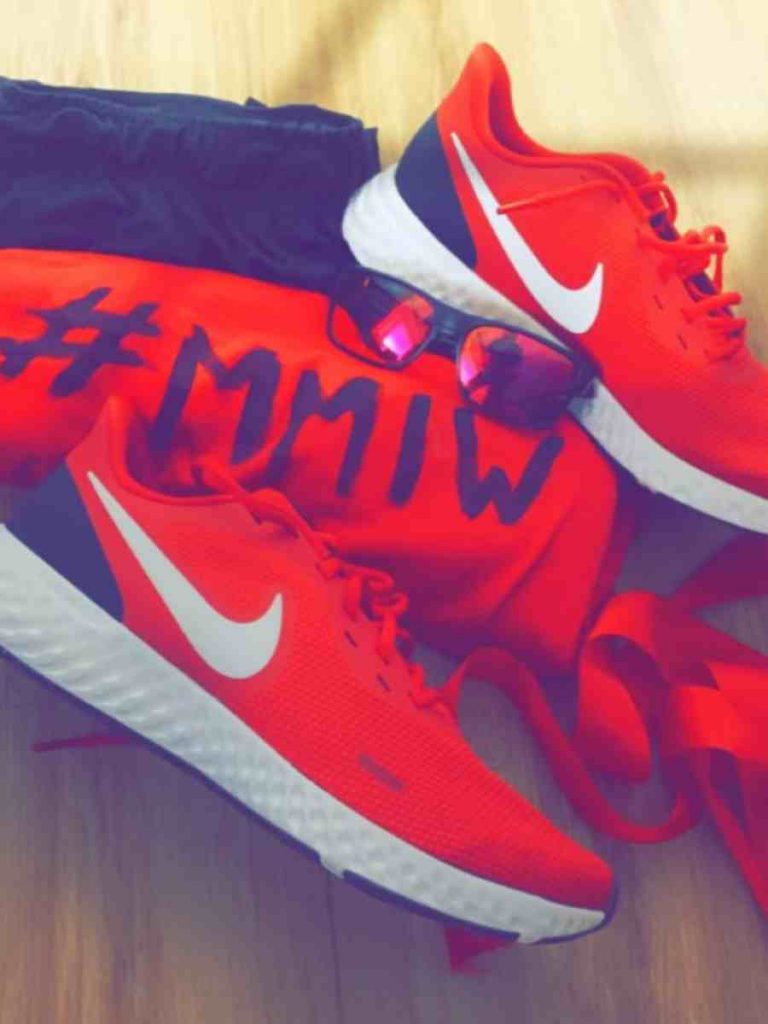
Jana-Rae Yerxa: How did it evolve into running for Missing and Murdered Indigenous Women (MMIW)?
Jerome Tuesday: Where do I start? The red. I was really bored during COVID. It was back in February and there’s also an Awareness Week in February for MMIW too. One of my friends was organizing an event, and then it just chimed in. It really broke my heart; I didn’t realize how troubled our people were in that kind of sense.
With COVID and spending a lot of time in lockdowns, I began researching and getting in touch with myself. I was researching our people and learning about our lack of our culture around here. It’s kind of funny that when I came here [to the SGEI Campus] for the Esthetician course spa day, my friend had a project to do makeup on someone, and she asked me. I said yes, and she did me up in traditional war paint. I remember looking in the mirror for the first time and it hit me in the gut, because it was like I saw who I am. COVID let me grow my hair out too, so that was the first time I’ve ever braided my hair, and then having the war paint too. I finally looked like myself for the first time. I’ve always felt like I had an identity crisis.
Jana-Rae Yerxa: Wow. When you say you finally looked like yourself, can you explain that to me a bit more?
Jerome Tuesday: Just my traditional, Anishinaabe self, I guess. I have always dyed my hair different colors or buzzed my hair. I never used to have long hair. I got a new job before COVID. Work didn’t care about me wearing hats, so I don’t have to keep it short, neat, and clean cut all the time. I feel happier having my hair braided. I’m not going to shave my head no more. I’m not going to dye my hair no more. I am keeping my black hair and my braids.
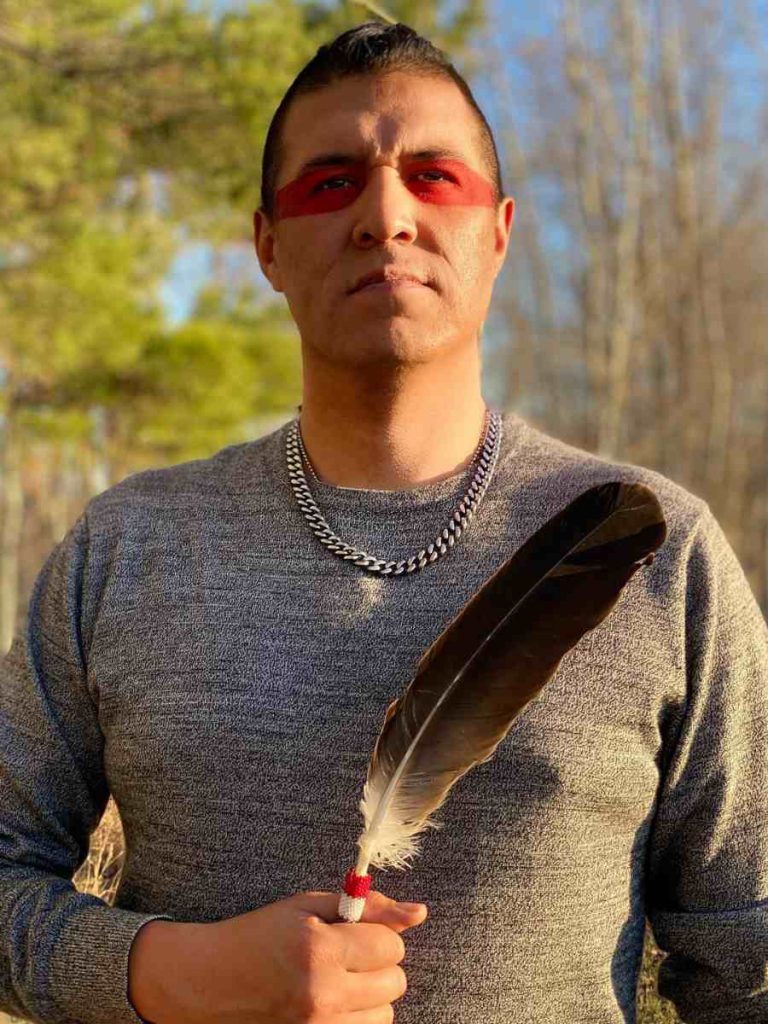
Jana-Rae Yerxa: Seeing yourself with the war paint, growing out your hair and it being braided, was that helpful for you in taking on what I see as a silent form of protest for MMIW with your running?
Jerome Tuesday: Yes, definitely. With COVID and lockdowns it made everyone bored and mental health is a big thing. I started seeing a counselor and my therapist started taking me down a traditional route of healing too. Ceremonies and sweats really opened doors for me to getting in touch with my culture. I never had that my whole life until the last couple of years. It led me to a deep dive of getting in touch with my culture and what is going on. Going back to February, I was blown away and torn apart that this happens. It happens everywhere, in our own backyard. You don’t realize how close it hits to home and it is family and relatives going missing.
So, when I started running, and still to this day, a lot of people always tell me they see me running a lot. I run along the waterfront; it is very commonplace, I wanted to change the narrative. I had this idea when I was back in college in London to run and have advertisements on my body because how often do you see someone running, and then it catches your eye, right?
I remember when our town was having problems with the Colonization Road name. All this was all going on at the same time. Our town was raising a big deal about a name change, it bothered me when Kenora and all the surrounding communities did the name change without question. Then, Fort Frances was wanting to go through the whole process of courts.
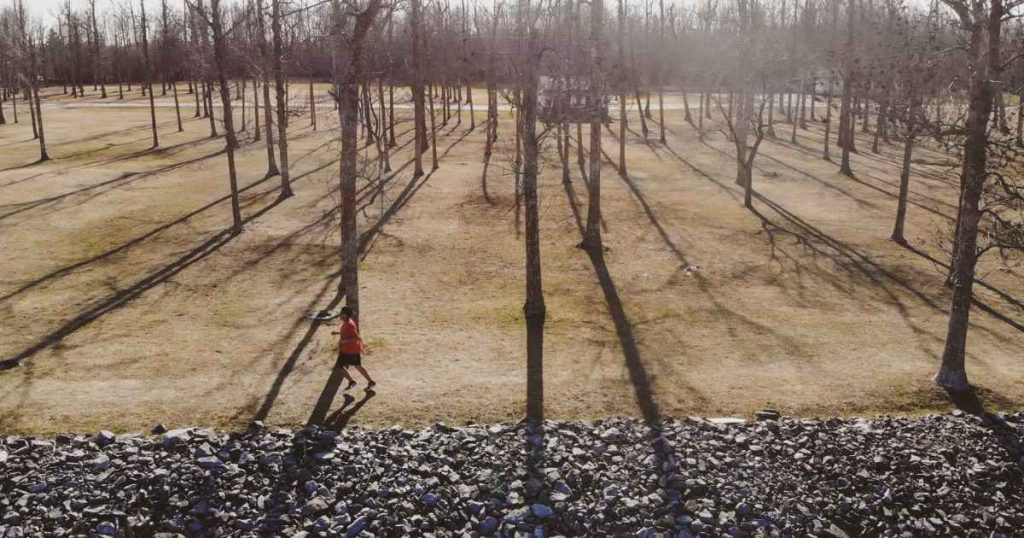
Jana-Rae Yerxa: Yes, there was a lot of resistance from town residents.
Jerome Tuesday: Yes, which I am understanding to a point. While this was happening and reading up on local rant and rave pages and seeing everyone’s opinion, their opinions were not always the greatest. I started to see the irony of it all; the coincidence of the whole colonization route happens to also be my running route. So, I thought, “why don’t I just be a running monument” and remind everybody, not just the people on the waterfront, but everybody. When I started to really think about it, I was counting how many cars I passed by since I run on the main drive. I am a big believer in manifesting, so if we can keep an active, collective mindset, and keep people actively thinking about this issue, it would help raise awareness. If I’m getting people saying ‘hey, I seen you out running,’ and that’s like five times a week, well now I can change the narrative, to people see me running in red. That is the goal.
Jana-Rae Yerxa: Do you notice a difference in terms of how people are responding?
Jerome Tuesday: I have noticed girls and women for sure come and talk to me about seeing me run for the cause. A lot of my friends’ kids will come up to me. They have a bunch of questions and that makes me happy too because I think getting the younger generations [involved] are more important because that’s where it all starts. So, at first it was MMIW. I had a red ribbon, but I have also added an orange ribbon for Every Child Matters.
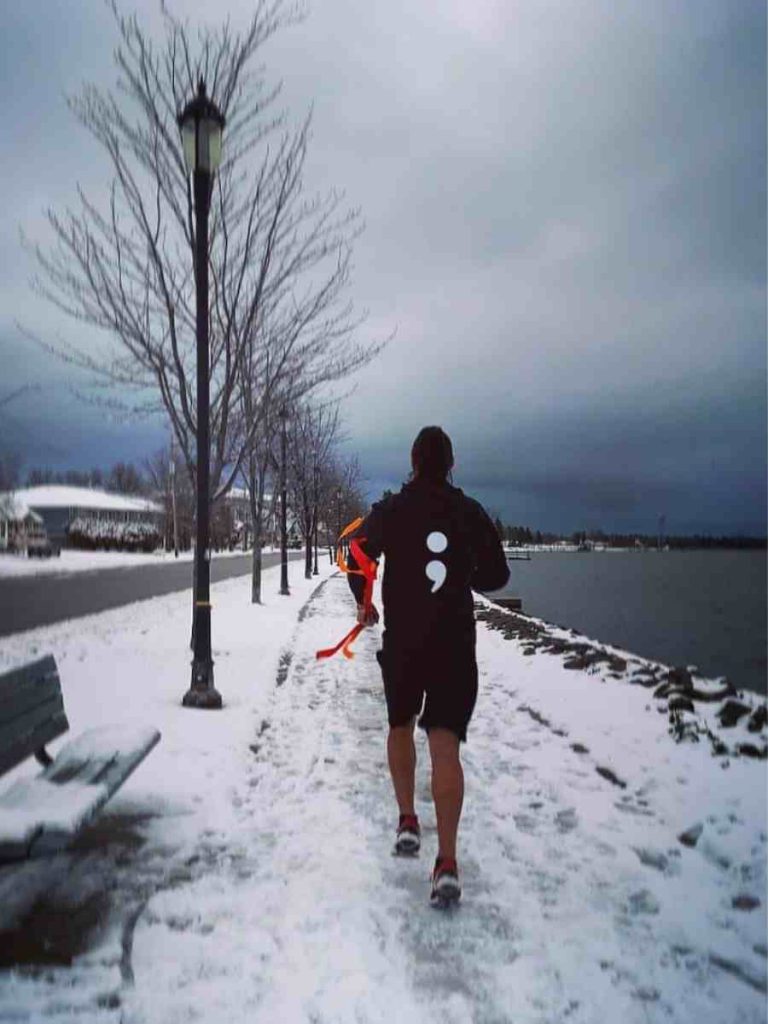
Jana-Rae Yerxa: How do you make sense of why Indigenous women and girls experience violence?
Jerome Tuesday: I don’t know if I make any sense of it. I tried to understand it. Is it vulnerability and stuff like that? I know it’s tough depending on where you live. I don’t know what happens, are people getting lured out or are people trying to leave? They are in vulnerable states. Stuff like that triggers me, the ongoing violence, that our whole ancestors have gone through. I believe it changes in different ways. It still goes on to this day, but just in different forms.
Jana-Rae Yerxa: Do you think our own communities struggle with violence against women?
Jerome Tuesday: Yes, and that is such a complex issue too. Being raised properly and it is tough when our parents, or grandparents were in residential schools. Maybe our parents wouldn’t have the proper care. Our families have really been torn apart. We haven’t lived where we were raised a normal way. Whatever normal is right? I had to go away from family and live in town. It still sucks, my parents had to move away and live in town just for me to get the same opportunities others had. I do want to help. The only thing I’m doing is running and raising awareness.
Jana-Rae Yerxa: I’m curious. When you think about colonialism, have you thought about how Indigenous men are harmed by colonialism?
Jerome Tuesday: Yes, well, I think about myself a lot. My whole life, I was confused. I don’t even know how to speak my language. I know a little bit now, but I just started practicing in the last couple of years since February 2021. I have officially started regularly participating in ceremonies, drumming, sweats, and gatherings. I am trying to learn about my culture, I have been starting to learn how powerful it is and how much it can help our people.
Jana-Rae Yerxa: I notice so many of us struggle with loss of culture and wondering are we enough but when I think about you running for the cause for missing and murdered Indigenous women- to me, that’s insightful and brave. You are living the responsibilities as an Anishinaabe man.
Jerome Tuesday: I wanted to let people know, not just women, but that there are men, Warriors, on the guy’s side that want to help and it’s not just women supporting women.
Jana-Rae Yerxa: Yes. It’s important that everybody cares about this issue. It’s not a women’s issue. Like even when you mentioned women experience violence in our own communities and all the reasons for these issues. What would you like to see change about how Indigenous women are treated?
Jerome Tuesday: I just hope they can feel safe, more so than ever. Justice for our women and for our children. I hope all families across the nation would get justice for their loved ones, and to have trust in the justice system too. I hope that our people can be heard, and proper investigations take place in all issues that affect our women and people.
Jana-Rae Yerxa: Has running helped you with carrying the sadness you feel with the awareness that comes with knowing about Missing and Murdered Indigenous Women?
Jerome Tuesday: Yes, and it’s helped me. It keeps me more inspired, like our interaction the other day. It makes me happy because interactions like that let me know I’m doing something right and that’s the goal. Whenever I go out running, I have a bunch of energy and that’s what helps me too.

Jana-Rae Yerxa: Miigwech for running and for running for all of us. Is there anything else you would like to add?
Jerome Tuesday: I wish I had more answers for you. I am still learning too. What can I do for Indigenous women? I hope I can help Indigenous women to feel more confident. I don’t really know how they get into those situations. It is too bad people capitalize on the vulnerability of our people. I work in a bar and a lot of our staff are female, so I see kind of that male aspect of creeping in on women. I always try to help provide a safe space for women. I have seen customers where I have had to kick them out of the establishment.
Jana-Rae Yerxa: What created that for you? To have women’s backs?
Jerome Tuesday: I don’t know, I have always had awesome women in my life. My grandmother and mother raised me well, I guess. I’ve just always been a caring person, naturally. I always want the best for everybody.
Resources and Ways You Can Contribute
As we draw the curtains on our enlightening conversation with Jerome Tuesday, the urgency of the MMIWG2S+ crisis and the resilience of those fighting for justice reverberate within us. His unwavering commitment to change is both inspiring and transformative. Now, as we stand at the crossroads of awareness and action, it’s essential to translate our newfound understanding into tangible steps toward progress. Here are some resources and ways you can contribute:
Educate Yourself: Take the time to educate yourself about the MMIWG2S+ crisis, its root causes, and its impact on Indigenous communities. Seek out books, documentaries, and online resources to deepen your understanding.
Support Indigenous-Led Organizations: Direct your support to Indigenous-led organizations that are actively working to address the MMIWG2S+ crisis. Consider donating to initiatives like the Native Women’s Association of Canada (NWAC), the National Indigenous Women’s Resource Center (NIWRC), or local grassroots organizations.
Advocate for Policy Change: Advocate for policy changes at the local, national, and international levels to address systemic issues contributing to the MMIWG2S+ crisis. Write to your elected officials, participate in advocacy campaigns, and amplify the voices of Indigenous leaders calling for action.
Amplify Indigenous Voices: Use your platform to amplify the voices of Indigenous activists, advocates, and community members who are leading the charge for justice. Share their stories, attend events, and engage in meaningful dialogue that centers Indigenous perspectives.
Stand in Solidarity: Show your solidarity with MMIWG2S+ families and communities by attending vigils, marches, and other events honouring Missing and Murdered Indigenous Women, Girls, & 2 Spirit. Respect Indigenous protocols and teachings while offering your support and allyship.
Local Resources:
Giishkaandago’ikwe Health Services
Weechi-it-te-win Family Services
Binesiwag Center for Wellness
Gizhewaadiziwin Health Access Centre
United Native Friendship Centre
Canadian Mental Health Association
Rainy River District Victim Services
Grand Council Treaty #3
Sioux Lookout First Nations Health Authority
Nishnawbe-Gamik Friendship Centre
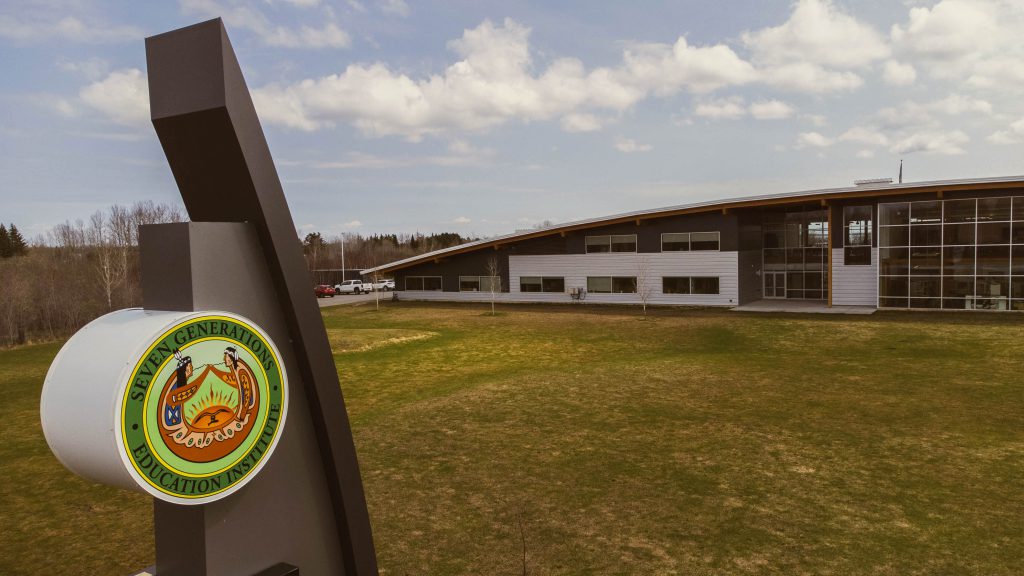
Engage in Culturally Enriched Educational Programming
Seven Generations Education Institute (SGEI) is an Indigenous-led educational organization that provides high school, post-secondary, training for employment and cultural programming to all Indigenous and non-Indigenous people in the Treaty Three area and beyond.
Check out our website to see all that SGEI has to offer and how we continue to provide culturally enriched educational programming for individuals across the lifespan!
